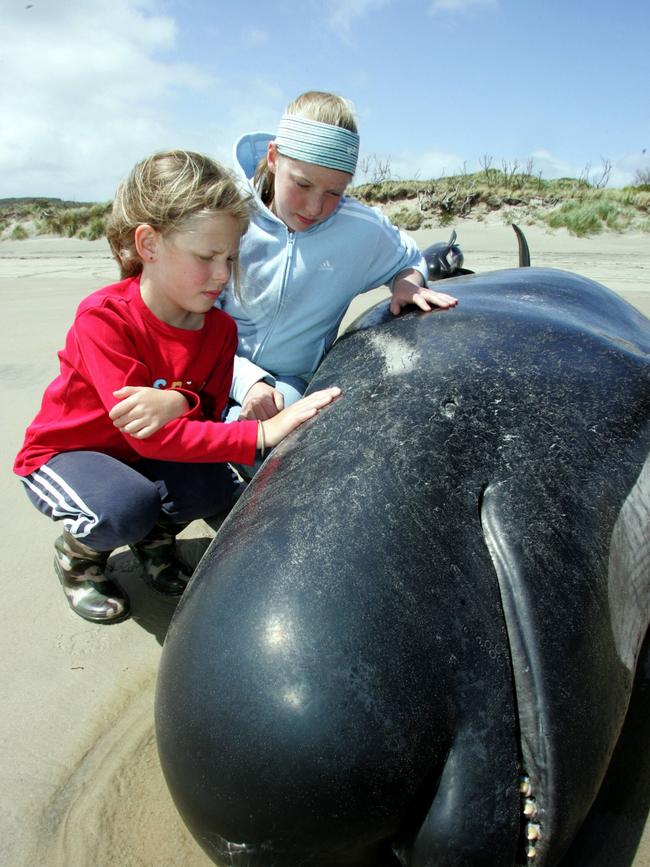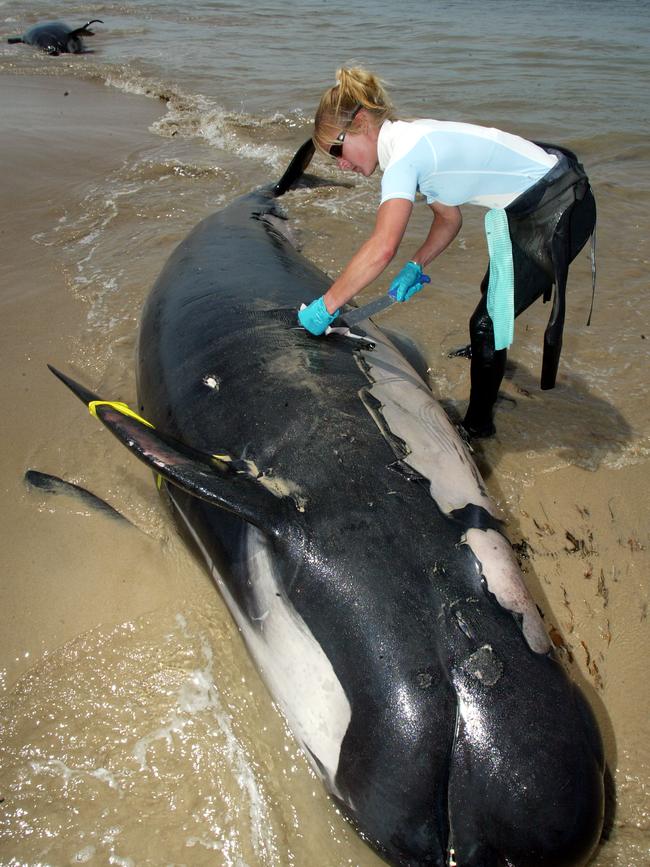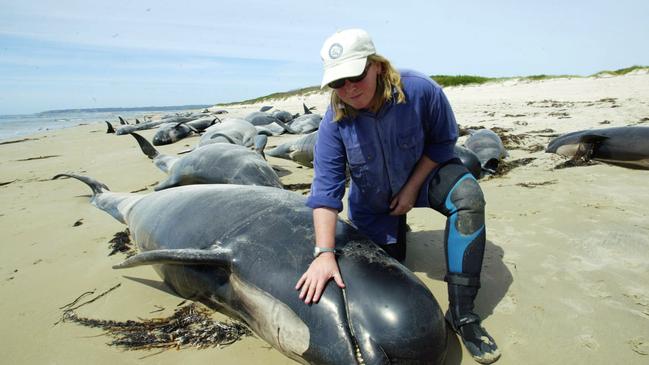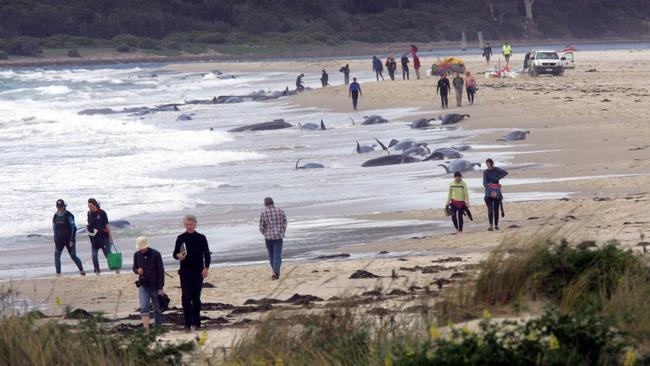Marine scientists left baffled as to why Tasmania is a hot spot for whale strandings
Despite great leaps forward in science, the tragic – and regular event – of whale strandings remains a relative mystery. See scientists speculate at why and how whales strand and why Tasmania is a hot spot >>
Tasmania
Don't miss out on the headlines from Tasmania. Followed categories will be added to My News.
TASMANIA is a hot spot for whale strandings with more than 80 per cent of all Australian events taking place here.
Marine experts are scratching their heads over why almost 500 long-finned pilot whales decided to travel through Hells Gates and into Macquarie Harbour this week.
“That is the million dollar question,” whale expert Vanessa Pirotta from the Department of Biological Science at Macquarie University said.
“Hells Gates is incredibly narrow. Was it a case of follow the leader or did something attract the pods? What made the whales come in and where were they heading?


“Even if we knew the why, there is still no way to predict such events and stop them.”
Tasmania has recorded about 700 single and mass strandings since record-keeping began. Those strandings involved about 6650 individual animals.
This week’s Macquarie Harbour stranding on the West Coast is the biggest in Australia’s history and again involved pilot whales, the species linked to all of Tasmania’s largest mass strandings. New Zealand and the North Sea between the UK and Scandinavia are also whale beaching hot spots.
The largest stranding in the world occurred at the Chatham Islands back in 1918 when 1000 pilot whales beached.
Then in 2017 about 600 long-finned pilot whales stranded in Golden Bay on NZ’s South Island.

“Pulses over the last five to 10 years imply that when sperm and pilot whales – which are Southern Ocean animals – sometimes come further north than usual, that is when we see strandings in Tasmania, the South Island of New Zealand and South America,” wildlife biologist David Pemberton said.
“Sadly, there is a tendency that once we get one stranding we get more because the whales are further north and vulnerable to historic risk zones such as Ocean Beach, Stanley, Marion Bay and King Island.”
Once stranded the animals can die through overheating, a lack of air, stress and even the pressure of their body weight on their organs.

Unlike the humpback whale, pilot whales do not migrate to Antarctica so misadventures are not connected to migration.
“While globally, stranding events remain a mystery, there are several possibilities as to why this might happen including misadventure, poor weather, complex coastlines or an error in navigation,” Dr Pirotta said.
“Whales and dolphins are able to navigate their environment in ways we only partially understand. They have an in-built sonar known as echolocation which enables them to use high frequency sounds to see the world and hunt for food.”
In 2004, scientists at the University of Tasmania linked whale strandings and weather, hypothesising that when cool Antarctic water rich in squid and fish flow north, whales follow their prey closer to land.

“In the Macquarie Harbour case, there may have potentially been an individual or a few, who misnavigated into shallow water and led the entire pod ashore. This could also be linked to another theory that suggests whales or dolphins may come ashore due to compromised health, and in this case, a couple of hundred followed,” Dr Pirotta said.
“Another theory is they may have been chasing prey which led them into trouble.”
About 270 stranded whales were spotted by a walker from the Macquarie Heads campground early Monday. They were not there before dark on the Sunday night.
Another 200 mostly dead animals were spotted from the air on Wednesday morning.
Originally published as Marine scientists left baffled as to why Tasmania is a hot spot for whale strandings
